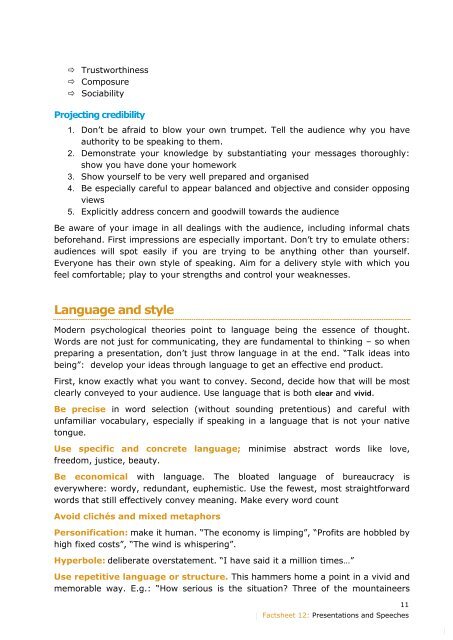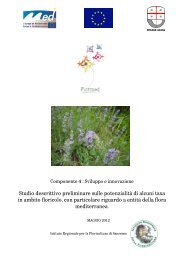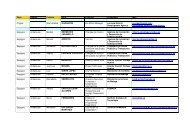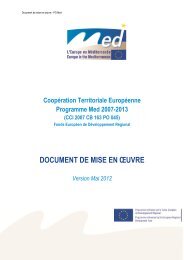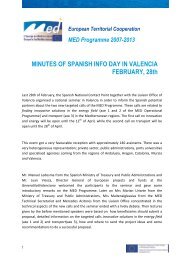MED Communication Handbook - Programme Med
MED Communication Handbook - Programme Med
MED Communication Handbook - Programme Med
Create successful ePaper yourself
Turn your PDF publications into a flip-book with our unique Google optimized e-Paper software.
� Trustworthiness<br />
� Composure<br />
� Sociability<br />
Projecting credibility<br />
1. Don’t be afraid to blow your own trumpet. Tell the audience why you have<br />
authority to be speaking to them.<br />
2. Demonstrate your knowledge by substantiating your messages thoroughly:<br />
show you have done your homework<br />
3. Show yourself to be very well prepared and organised<br />
4. Be especially careful to appear balanced and objective and consider opposing<br />
views<br />
5. Explicitly address concern and goodwill towards the audience<br />
Be aware of your image in all dealings with the audience, including informal chats<br />
beforehand. First impressions are especially important. Don’t try to emulate others:<br />
audiences will spot easily if you are trying to be anything other than yourself.<br />
Everyone has their own style of speaking. Aim for a delivery style with which you<br />
feel comfortable; play to your strengths and control your weaknesses.<br />
Language and style<br />
Modern psychological theories point to language being the essence of thought.<br />
Words are not just for communicating, they are fundamental to thinking – so when<br />
preparing a presentation, don’t just throw language in at the end. “Talk ideas into<br />
being”: develop your ideas through language to get an effective end product.<br />
First, know exactly what you want to convey. Second, decide how that will be most<br />
clearly conveyed to your audience. Use language that is both clear and vivid.<br />
Be precise in word selection (without sounding pretentious) and careful with<br />
unfamiliar vocabulary, especially if speaking in a language that is not your native<br />
tongue.<br />
Use specific and concrete language; minimise abstract words like love,<br />
freedom, justice, beauty.<br />
Be economical with language. The bloated language of bureaucracy is<br />
everywhere: wordy, redundant, euphemistic. Use the fewest, most straightforward<br />
words that still effectively convey meaning. Make every word count<br />
Avoid clichés and mixed metaphors<br />
Personification: make it human. “The economy is limping”, “Profits are hobbled by<br />
high fixed costs”, “The wind is whispering”.<br />
Hyperbole: deliberate overstatement. “I have said it a million times…”<br />
Use repetitive language or structure. This hammers home a point in a vivid and<br />
memorable way. E.g.: “How serious is the situation? Three of the mountaineers<br />
11<br />
� Factsheet 12: Presentations and Speeches<br />
�


